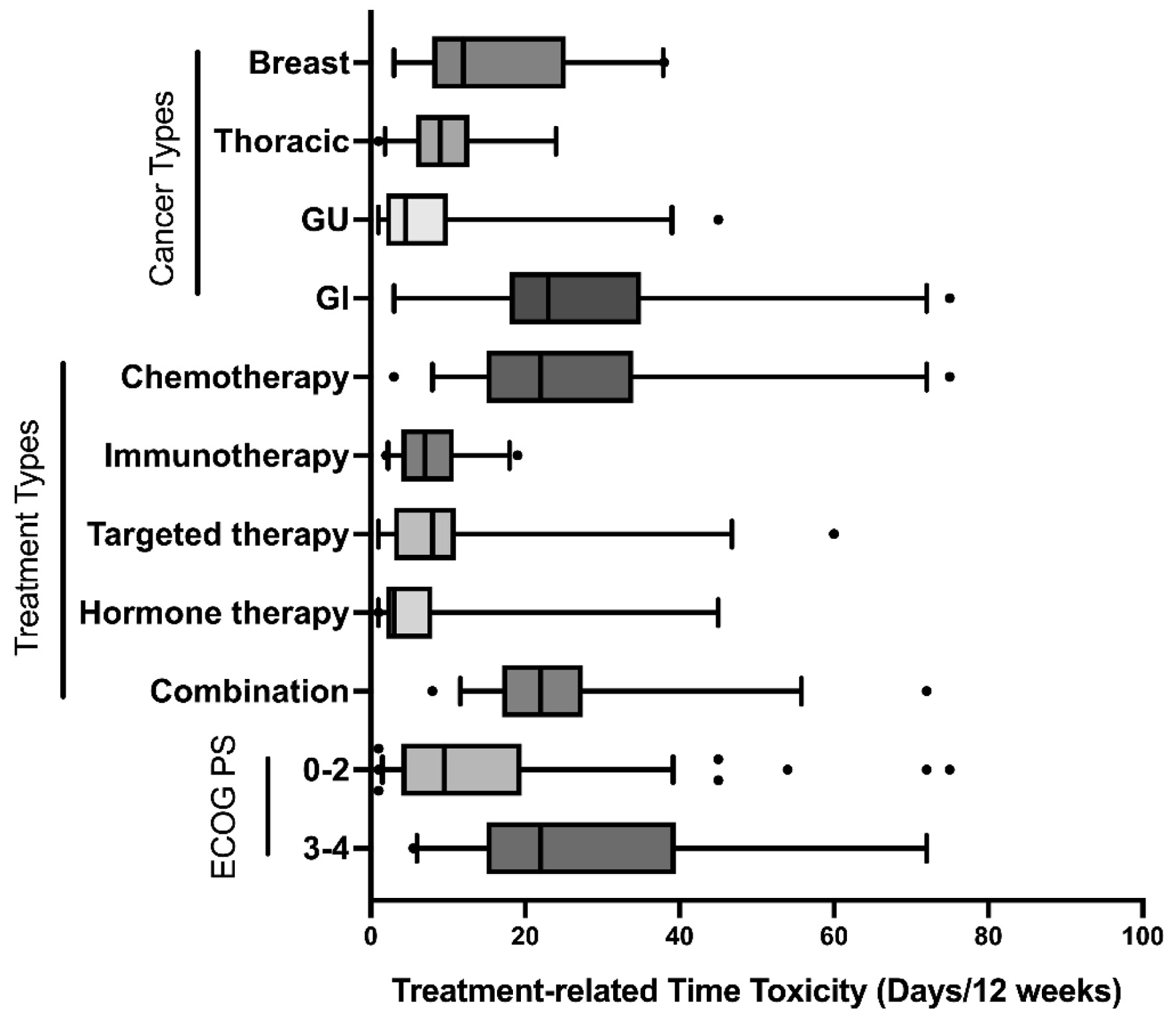| Guy and Richardson [13] | 2012 | Payment claim data from the National Ambulatory Medical Care Survey | USA | 2,470 | Any cancer diagnosis | Minutes spent with oncologists | Mean of 23 min per oncology visit |
| Ray et al [14] | 2015 | Analysis using The American Time Use Survey data | USA | 3,787 | Patients with any conditions were included | Reported minutes spent seeking medical care per day | Mean of 123 min spent per medical visit |
| Rocque et al [15] | 2020 | A collection of direct observations, patient survey, and administrative claims | USA | 132 | Metastatic breast cancer | Minutes spent | Average 7-10% of the initial 3 months of treatment were spent on health care |
| Bange et al [12] | 2020 | Retrospective cohort study using medical records | USA | 362 | Metastatic pancreatic cancer | Days spent | 10% of survival days spent receiving palliative chemotherapy |
| Gupta et al [16] | 2023 | Secondary analysis of the CCTG CO.17 trial | Canada | 572 | Advanced colorectal cancer receiving cetuximab vs. supportive care | Home days as days spent at home | Despite a 6-week OS benefit from cetuximab, home days were equal between treatment and supportive care |
| Bateni et al [11] | 2023 | Retrospective, matched cohort study between two historical eras | Canada | 731 per cohort | Stage II-IV melanoma | In-person days with health care visits for the 1st year since treatment | Average 1 in 7 days for stage IV melanoma |
| Gupta et al [2] | 2024 | Retrospective cohort study | Canada | 5,785 | Stage IV NSCLC | Health care contact days | Median contact days were 36, median weekly percentage of 33.3% |
| Baltussen et al [1] | 2024 | Prospective study | Mexico | 158 | Metastatic cancer, ≥ 65 years old | Health care contact days within the first 6 months | Mean of 21% of days spent with healthcare contact |
| Gupta et al [17] | 2024 | Retrospective study using Medicare survey data | USA | 1,168 | Cancer survivors ≥ 65 years old | Health care contact days | Cancer survivors spent 1 month of the year receiving health care |
| Kagalwalla et al [7] | 2024 | Retrospective study using real-time location badge data | USA | 435 | Adult patients with any cancer diagnosis | Minutes spent for oncology-related ambulatory care | Median oncology clinic time: 119 min per visit |
| Banerjee et al [18] | 2024 | Single-center, cross-sectional survey | USA | 252 | Multiple myeloma after stem cell transplantation | TimeTox+, defined as ≥ 1 contact per week | 40% of all multiple myeloma patients were positive for time toxicity |
| Johnson et al [10] | 2024 | Retrospective cohort study using the VA Clinical Cancer Registry | USA | 468 | Stage IV gastrointestinal cancer | Contact day | 1 in 3 days, with a “U-shaped” pattern with an initial peak after diagnosis, and a rise near the end of life |
